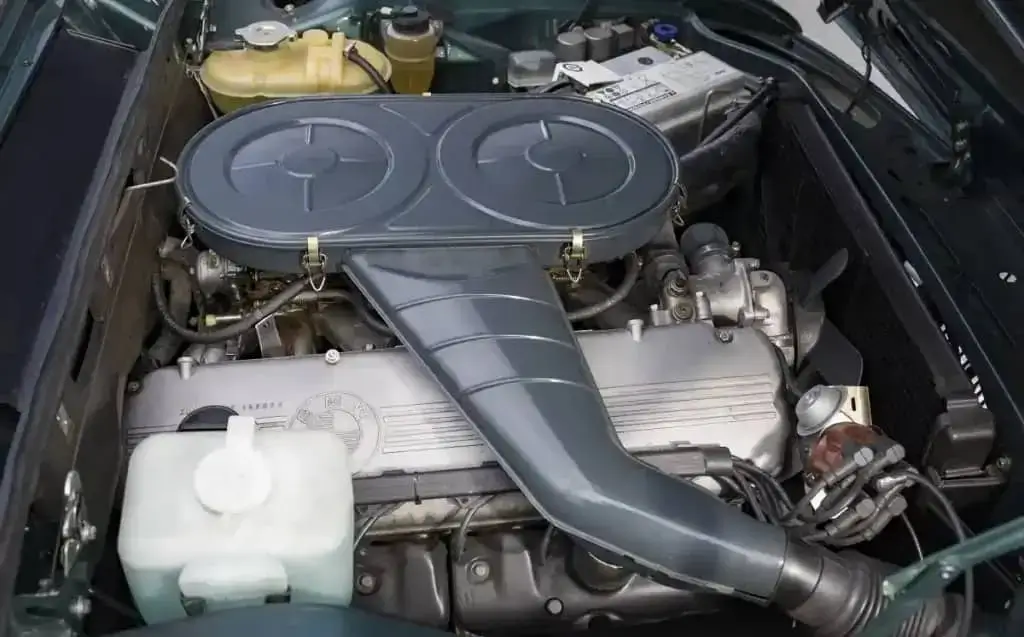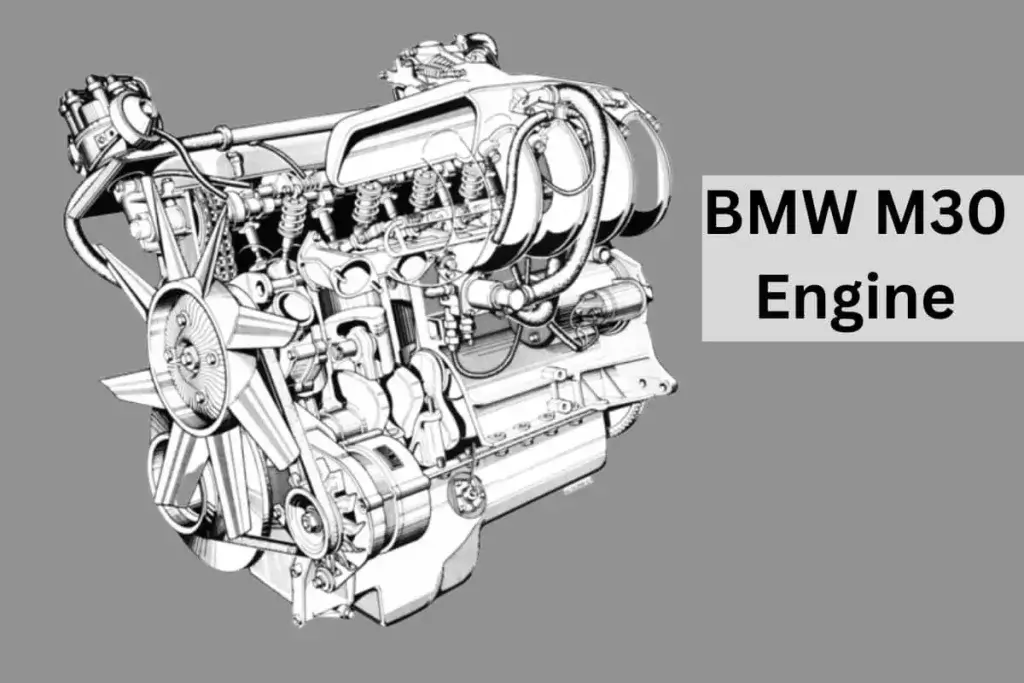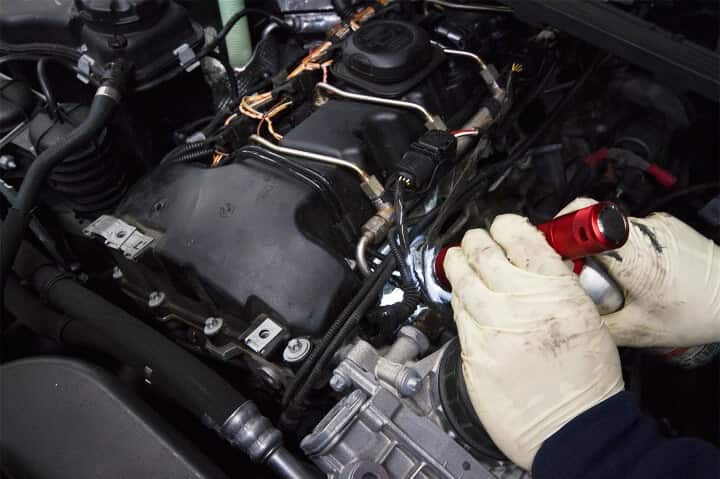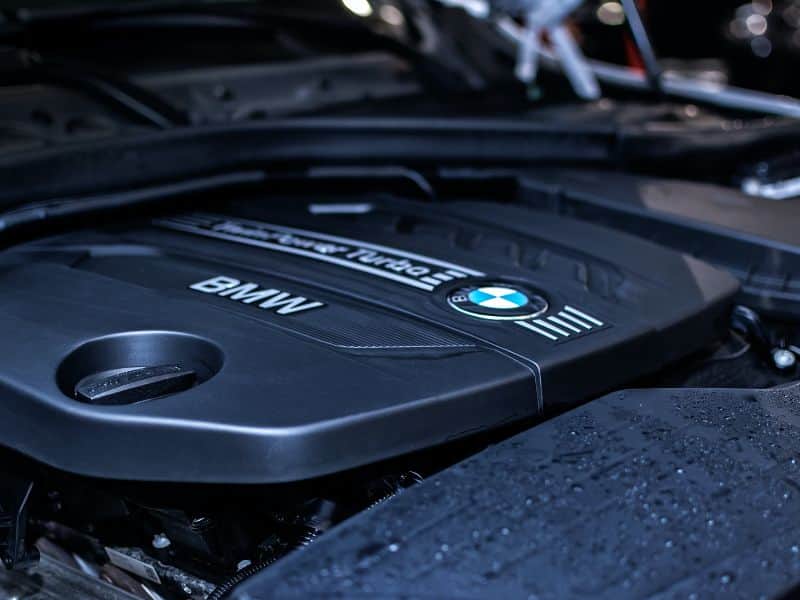The BMW M30 is a six-cylinder petrol engine, which has a reputation for being the longest-produced engine for about 27 years. From 1968 to 1995 the BMW M30 engine powered various BMW cars.
This inline-six engine was launched in the BMW 2500 and 2800 sedans. Initially, the M30 was launched in 2.5 liters & 2.8 liters or 2,494 cc & 2,788 cc respectively. Then with time, the engineers developed larger displacements, where the largest being 3.5 liters (3,430 cc).
BMW is famous for producing the best inline-six engines in the market. And the M30 is another example of great German engineering. The M30 was a very powerful and large engine, which has been rated by the Ward’s as one of the “Top Engines of the 20th Century”.
And with its reliability and performance, it dominated the market for nearly three decades and left its legacy for others to follow.
BMW M30: An Overview
The BMW M30 engine was first developed in the 1960s from the BMW M10 four-cylinder engine. The M30 engine used an iron block, an aluminium head, and an overhead camshaft with two valves per cylinder(which we’ll also discuss later).
The M30 and M10 also have some similarities like the profile lowering 30-degree slant to the right, crossflow cylinder head, and a chain-driven camshaft with rocker arm valve actuation.
Also, both engines have a cast-iron block with an aluminium head and a forged crankshaft.
The M30 also got the nicknames “Big Six” and “Senior Six”, because, until the BMW M70 V12 engine launched in 1987, the M30 was the most powerful and largest regular production engine.
All The Versions

Introduced in the year 1968, where it was just initially launched in two iterations, and with time it launched several iterations, each with more refined performance and reliability.
Starting from the 2,494 cc, and with time it goes all the way up to 3,430 cc. So, let’s check each one of them for better understanding.
M30B25V
The M30B25V is one of the first iterations launched in 1968 in the E3 2500, with a displacement of 2,494 cc. With a compression ratio of 9.0:1, it produces around 148 bhp at 6000 rpm and a torque of 156 lb-ft (211 N⋅m) at 3,700 rpm. And it is the lowest-powered version of the M30 engine.
It also has a bore of 86 mm (3.39 in) and a stroke of 71.6 mm (2.82 in). With dual Solex Zenith 35/40 INAT carburetors, the M30B25 was previously called M06 and M68, then they renamed the name to M30B25V, where the “V” means Vergaser (carburetor in German).
Applications:
The M30 launched with the E3 2500 (1968–1977), then it was also used in E9 2.5 CS (1974–1975), E12 525 (1973–1976) with a Solex 4A1 carburetor, E12 525 (1976–1981), and E23 725 (1977–1979).
M30B25
The M30B25 launched in 1981, also has the same iteration of 2494cc. The only difference is it uses a Bosch L-Jetronic electronic fuel injection. This helps it to produce the peak power of 148 bhp at 6000 rpm and slightly increased torque of 159 lb-ft (215 N⋅m) at 3,700 rpm.
Applications:
The M30B25 was used in the E28 525i (1981-1987) and E23 725i (1981-1986).
M30B28V
The M30B28V was also introduced in 1968 with its low-power brother M30B25V. Where it uses two Solex Zenith “35/40 INAT” carburetors, which also gives it the suffix “V” in its name.
With a displacement of 2,788 cc, it has a bore of 86 mm (3.39 in) and the stroke is 80 mm (3.15 in). It also has a compression ratio of 9.0:1.
At its peak, it can produce around 168 hp at 6,000 rpm and 173 lb-ft(235 N⋅m) at 3,700 rpm. However, this result would slightly fluctuate in different countries according to the model & carburetor used.
Before the engine was named M30B28V, it was known as the M06 and M68.
Applications:
- E3 2800 (1968-1977)
- E9 2800 CS (1968-1971)
- E3 Bavaria (1971-1971) only for the United States
- E12 528 (1974-1976) with dual Zenith INAT carburetors
- E12 528 (1976-1978) with Solex 4A1 carburettor
- E23 728 (1977-1979) also with Solex 4A1 carburettor
Also Read: BMW M10 Engine: The Story Of The Most Iconic Legend
M30B28
In 1977 BMW upgraded the 2788cc engine with the Bosch L-Jetronic electronic fuel injection. Additionally, this boosted the peak power output to 181 bhp at 5,800 rpm and a torque of 177 lb-ft (240 N⋅m) at 4,200 rpm.
Applications:
- E12 528i (1977-1978) for North American markets only
- E12 528i (1978-1981)
- E23 728i (1979-1986)
- E24 628CSi (1979-1987)
- E28 528i (1981-1987)
M30B30V
The M30B30V was based on the M30B28V with a 3 mm larger bore, which gives it a displacement of 2,986 cc. It also has dual Zenith 35/40 INAT carburettors, with a compression of 9.0:1.
This upgrade gives it a peak power of 178 bhp and 188 lb-ft at 3,700 rpm torque. However, in the United States, it only produces 170 hp at 5800 rpm.
Applications:
- E9 3.0 CS (1971-1975)
- E9 3.0 CSL (1971-1972)
- E3 3.0 S / 3.0 L / Bavaria (1971-1974)
- E24 630 CS (1976-1979) with Pierburg 4A1 carburetor
- E23 730 (1977-1979) with Solex 4A1 carburetor
M30B30
In 1971 the M30 2,986 cc (fuel-injected version) engine was initially introduced with a Bosch D-Jetronic mechanical fuel injection system. Then in 1976 this unit comes upgraded with the Bosch L-Jetronic electronic fuel injection.
The peak output may slightly vary depending on the different model, year, or whether a catalytic converter is fitted. However, the M30B30 produced around 197 bhp at 5,500 rpm and 201 lb-ft at 4,300 rpm torque.
Applications:
- E9 3.0 CSi (1971-1975)
- E9 3.0 CSL (1972-1973)
- E3 3.0 Si (1972-1975)
- E12 530i (1975-1978) North America only
- E12 530 MLE (1976-1976) only for the South African market
- E24 630CSi (1977-1978) Only North America market
- E32 730i (1986-1995) -185bhp
- E34 530i (1988-1990) -185bhp

M30B32
The M30B32 is a 3,210 cc engine which in many cars is badged as 3.3L. From 1978 to mid-1981, the U.S. version engine came with the Bosch L-Jetronic electronic fuel injection. Which was then changed to Bosch Motronic digital fuel injection in June of that year. So this was also the first time BMW used the motoric fuel injection.
The M30B32 had a peak power output of 197 bhp at 5,500 rpm and 210 lb-ft at 3,500 rpm.
Applications:
- E9 3.0 CSL (1973-1975)
- E24 633CSi (1976-1984) producing 194 or 197 bhp in Euro spec, and 172–174 bhp in USA spec
- E3 3.3 Li (1976-1979)
- E23 733i (1977-1984) producing 197 bhp in Euro spec, 174–194 bhp in USA spec
- E12 533i (1979-1981) North American market only
- E23 732i (1979-1986)
- E28 533i (1982-1984) only North American market
- E30 333i (1984-1986) only South Africa
Also Read: BMW Digital Key Plus Compatible Cars (With Setup Guide)
M30B33V
The M30B33V is a carburetor version of the engine with a displacement of 3,295 cc, which was introduced in 1973. It has a bore of 89 mm and a stroke of 88 mm.
It has a peak output of 187 bhp at 5,500 rpm and torque of 213 lb-ft (289 N⋅m) at 3,500 rpm.
Applications:
This engine was used in the E3 3.3 L from 1973-1975.
M30B34
The M30B34 is a 3,430 cc engine, which is the largest displacement of the M30 engine, along with the M30B35. This engine was launched in 1982 with a bore of 92 mm (3.62 in) and a stroke of 86 mm (3.39 in).
In Europe and most other international markets, this engine had a compression ratio of 10.0:1 with a peak output of 215 hp at 5,800 rpm and 229 lb-ft at 4,200 rpm. However, North American and Japanese markets get the engines with an 8.0:1 compression ratio, which produced around 182 hp(136 kW).
However, the Bosch Motronic digital fuel injection system was installed in engines of all the markets.
Applications:
- E23 735i / L7 (1982-1987)
- E24 635CSi / L6 (1982-1987)
- E28 535i / 535is / M535i (1985-1988)
Also Read: BMW N51 vs N52: Differences You Should Know
M30B35
The M30B35 is a 3,430 cc engine, however, it uses a B35 suffix for its model code. It uses a Bosch Motronic 1.3 digital fuel injection, with a compression ratio of 9.0:1. This engine has a peak output of around 208 hp at 5700 rpm and 225 lb-ft at 4000 rpm torque.
In certain markets, this engine was sold without a catalytic converter, which had a slightly increased output of 217 hp and 232 lb-ft (315 N⋅m) torque.
Applications:
- E24 635CSi (1988-1989)
- E32 735i (1986-1992)
- E34 535i (1987-1992)
This engine was also used in the Italian-designed and built luxury off-roader called Rayton Fissore Magnum 3.5 from 1988-1989.
Special Turbocharged M30 Engine
BMW experimented with the M30 engine with turbochargers, which ended up developing some very special versions. The M30 became the base for the first turbocharged inline-six engines. Also at that time, this engine was the fastest sedan in the world, with a peak output of 355 bhp at 6000 rpm and 384 lb-ft at 4000 rpm.
BMW M102
The M102 also known as M30B32LAE was the first turbocharged six-cylinder engine. Which was in production from 1980 to 1982.
This engine has a displacement of 3,210 cc, with a KKK K27 turbocharger producing 9 psi of boost and an air-to-air intercooler. Which helps it to have a peak output of 252 bhp (188 kW), this engine was used in the BMW E23 7 Series (“745i”). However the right-hand drive cars like the South African 745i, don’t use the M30, they use a BMW M88 N.A. engine.
Also Read: What BMW Models Has the N52 Engine?
BMW M106
The BMW M106 also known as M30B34MAE, succeeded the M102 and was produced from 1982 to 1986.
Some upgrades like Bosch Motronic engine management which gives it a displacement of 3430 cc. It also has increased the compression ratio from 7.0:1 to 8.0:1. However, the power output stays the same at 248 bhp as the M102 with a lower rpm. Also, the peak boost has been reduced from 9 to 6 psi.
The M106 doesn’t have any direct successor, however, in 2006 the BMW N54 was launched as BMW’s next turbocharged petrol engine.
The BMW M106 has been used in the E23 745i from 1982–1986.
Alpina B10 Bi-Turbo
The Alpina B10 Bi-Turbo is a high-performance version of the BMW 5 Series E34. After spending millions of dollars this car was finally introduced in 1989 at Geneva Motor Show. Which used a modified M30 engine, with two turbochargers and forged pistons.
This upgraded engine had a peak output of 355 bhp at 6000 rpm and 384 lb-ft at 4000 rpm, which makes it the fastest sedan car in the world. (at that time)
One amazing story about this engine is that the last 50 M30 blocks were shipped to Alpina to develop their final 50 B10 Bi-Turbo.
Apart from this the M30B35LE engine, also known as the M90 uses the same block as the M88/1 and uses the cylinder head of the M30 engine. It was used in multiple cars from 1979 to 1982.
Motorsport
The M30 was famously known for its contribution to the motorsport world. It powered a series of E9 CSL, one of the most popular cars in the motor racing world. It also powered several racing iterations of the E24 6-Series coupes in the European Touring Car Championship (ETCC) throughout the 1970s and into the mid-1980s.
Common M30 Engine Problems
The M30 engine is BMW’s one of the most durable & reliable engines ever. And this clarifies why this engine was in production for almost three decades.
However, as with any mechanical component, the M30 also has some common problems, which need to be addressed. By the way, I know a guy who still has this masterpiece, which works. However, if you get really lucky and find a working M30 engine, here are some common problems you should know.
Cooling System Problems
This is a pretty common issue in the M30, where the cooling system easily malfunctioned. At least once every owner faces the problem of overheating due to the cooling system malfunction.
Additionally, there are some components of the cooling system, which are very well known to fail easily. Which are the plastic coolant expansion tank, plastic radiator housing, thermostat, and fan clutch.
Water Pump Malfunction
This is another common malfunction found in this engine, where the engine used a plastic impeller for the water pump. Although it was built to last about 1,00,000 miles, however, it’s very common to fail well before this time.
So, in this case, the best way for you to replace the plastic impeller with an aftermarket metal impeller, which will last way longer.
Additionally, you can also face oil leaks from the damaged head gasket, oil leakage from the oil filter housing, Valve Train Wear, and other issues related to time-related parts.
Conclusion
Nowadays the M30 engine is an anticpiece, and not everyone is willing to let it go. This engine was in production for almost 3 decades and some of it is been driven for almost 5 decades, with the very car and good investment (not expense).
However, if you ever got your hand on one of these you should absolutely jump for it, after doing a proper inspection. Because a good one will be your investment likewise a bad one can dry up your pockets. So, always check thoroughly before purchasing a car with the M30 engine.
Image Credit: autowp.ru
Related Posts:
- BMW M10 Engine: The Story Of The Most Iconic Legend (automotorx.com)
- BMW N52 Engine: All You Need To Know (automotorx.com)
- BMW N51 vs N52: Differences You Should Know (automotorx.com)
- BMW N51 Engine: Everything You Need To Know About SULEV (automotorx.com)
- BMW N52 Reliability: The Great Natural Aspirated Engine (automotorx.com)




